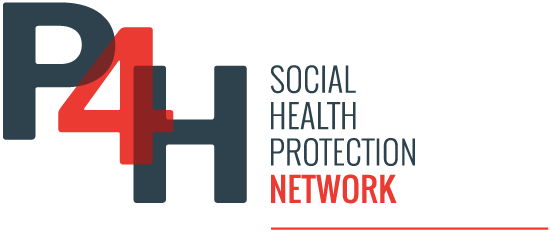Türkiye is in both Asia and Europe, bridging the Balkans, Caucasus, Middle East, and eastern Mediterranean regions. Türkiye’s population was 84.1 in 2021 million people and life expectancy was 76 years in 2023. Despite an inflation rate of 53.9% and projected unemployment rate of 9.4% in 2023, Türkiye remains the 17th largest economy in the world with a GDP of US$ 1.024 trillion as of 2023, has become an upper-middle-income country, and is a member of the Organisation for Economic Co-operation and Development and the Group of 20 (G20), according to reporting from the World Bank.
In 2021, several indicators give a picture of spending on health in Türkiye. Health care spending comprised 4.6% of GDP, and per person spending was US$ 441 of current health expenditure (CHE). The public health expenditure share of CHE was 78.8% while private spending was 21.2% of CHE. General government expenditure on health care was 11.5% of domestic general government expenditure (GGHE-D), and out-of-pocket spending was 16.3% of CHE, which has improved from the rate that was as high as 28.6% in 2000.[1]
The excerpt below, from Health Systems in Action: Türkiye, report by the WHO Regional Office for Europe and the European Observatory on Health Systems and Policies, gives an overview of the health system.
A social health insurance scheme was introduced in 2006 with a single payer. A new social security system, the General Health Insurance Scheme, was established (2006), which operationalized compulsory social health insurance (SHI) with a single payer, the Social Security Institution (SSI), merging five existing insurance schemes…
Since 2019, the health system has been further centralized … The MoH and its provincial directorates serve as implementers of health policies, overseeing workforce planning, the regulation of medicines, vaccines, cosmetics and medical devices, and health research and development… In 2019, 98.8% of the population in Türkiye had SHI, up from 71.6% in 2003 and 93.2% in 2008. Meanwhile, 9% had voluntary private health insurance, primarily to cover care in private hospitals not under (or under limited) contract with the SSI, or as complementary health insurance to cover services outside the basic benefits package. [S]everal types of individuals are covered for free without eligibility requirements. These include children, and those who require long-term medical support, care for infectious diseases, services related to drug abuse and addiction prevention, childbirth services, and emergency care. The state is also responsible for ensuring coverage to individuals receiving social benefits and those with a monthly per capita income of less than one-third of the gross minimum wage …
A comprehensive benefits package is determined by the SSI, but there is cost-sharing for medicines. Since 2007, the SSI has determined annually what services are covered publicly via the Health Implementation Guide. The current benefit package is comprehensive and finances almost all services in preventive, inpatient and ambulatory care, except cosmetic surgery. There are also some limitations to specific assisted reproductive methods and dental treatments. Direct cost-sharing occurs as co-insurance for prescriptions and medical devices (at 20% of price; 10% for retirees) and copayments for outpatient visits (at a fixed rate) … OOP payments are driven by relatively high co-payments for pharmaceuticals and outpatient services without referral… Most care is delivered in the public system and primary care is organized according to geography and population metrics at the provincial level… Efforts have been made to strengthen primary care and reduce unnecessary hospital services.
References
[1] World Health Organization, Global Health Expenditure Database (choose country)



